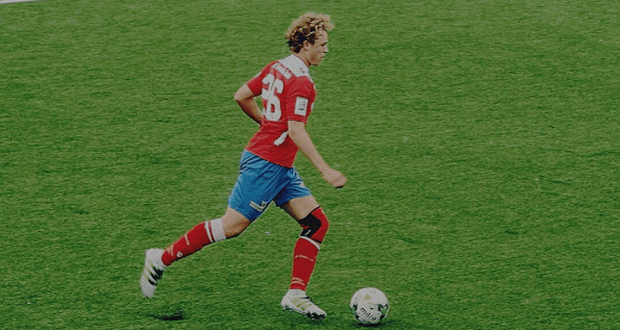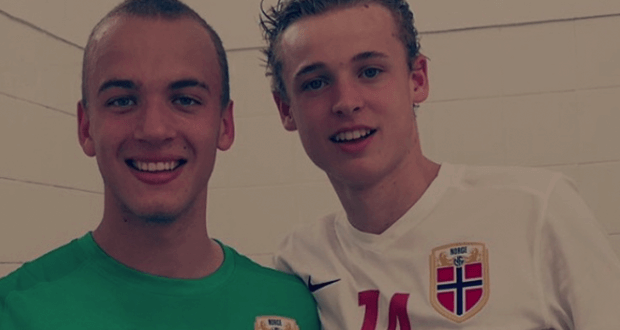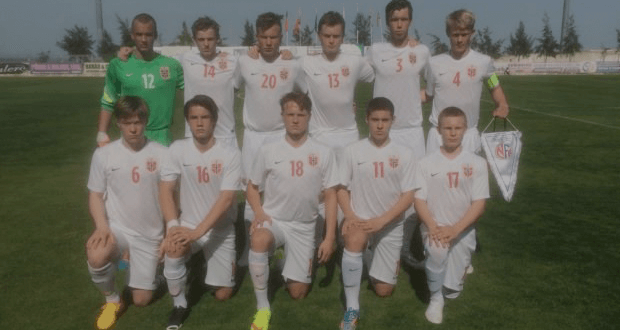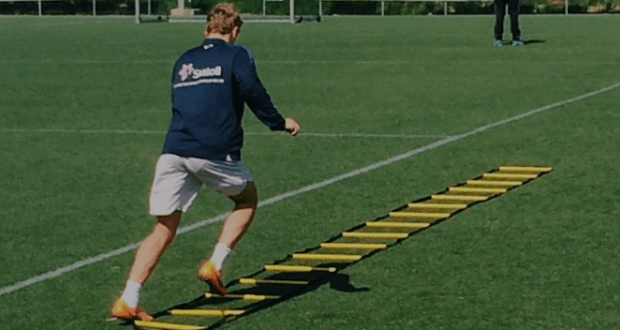“The small – yet significant – difference”

Sjur Lothe is only 16 years old, but he has already represented Norway on the youth national team. This achievement is the result of hard work and dedication; Lothe began self-training at a very young age, and that has since paid off. Here’s his story.
If you ever find yourself driving around the southwestern parts of Norway, there’s a good chance you’ll spot a 16-year-old kid named Sjur Lothe running around with a ball. The young Norwegian spends a lot of time around the ball, both on his own time and at his club, Vard Haugesund.
But it’s on his own time that Sjur Lothe has worked especially hard, and that has paid off with selections to the youth national team. This is quite an achievement for a young lad who plays for a club whose senior team plays in Norway’s third best football league.
“I’m absorbed in my self-training. It has been important in my development as a football player, especially in terms of technique and ball control. I view the time spent on self-training as “the small difference”—that is, the one thing that separates me from the rest, explains Lothe, who left his childhood club FK Haugar in 2015 to join Vard.
“In the long run, the number of hours spent on self-training is decisive. In my view, that’s where the differences start to show, but determining how many hours you need to spend on self-training is difficult, as there are many factors in play, such as time spent on organized training, and the length, intensity, and quality of your training.

“How often you need to train depends not only on how well trained you already are, but also on the intensity level of your exercises. I’d say that you should spend about 2.5 hours per day on self-training. Earlier, when I was around 11-14 years old, spending lots of time on self-training was my main focus. Back then I would self-train between 18 and 20 hours per week.”
“I would rather practice making 100 passes than 20. The specifics of my training would also vary, but I mostly focused on keeping the ball under control and playing around with it. Now my daily life is busier due to school and team practices, and the time I spend on self-training has decreased. I now focus primarily on quality, awareness, and match-like situations when self-training. I’m very preoccupied with that “small difference” belief. It’s all about executing the 10 additional passes that everyone else neglects.”

A lack of dedication and continuity
The majority of youth players aren’t as diligent as Lothe, though, and that bothers the Vard player.
“Most of the young players I know often hang out with their friends and spend their time on PlayStation or at parties; they prioritize all that over their development as football players. That’s something I find unfortunate. What I’ve found to be a key factor in a player’s development is the ability to sacrifice. If you want to become good at something, you must devote time to it. There are so many players on my team who self-train, but I’ve noticed that no one has thoroughly considered exactly what or how they need to improve. Also, my teammates don’t seem to have any continuity in their training. These things are important.”

Fortunately, Sjur Lothe has some advice on how one can get started with self-training.
“What oftens keeps us from self-training is time. Self-training is time-consuming. But it really doesn’t have to be. My advice is to choose one or two things that you want to improve, and then work a little on those things every day. Don’t make 100 passes; make 20. Don’t make 100 crosses; make 20. Don’t dribble 15 times; start out with eight. That’s important if you want to step up the quality of your game and develop better control.”
“There are also certain exercises that are better than others and easier to squeeze into your daily schedule. This is where the m-station enters the picture. Spend about 10 to 30 minutes each day with the m-station. Make a habit of it. Improve a little each day. Make that small difference”
The ambitious Lothe continues:
“In the hours I’ve spent on self-training, I’ve focused on developing better ball control, developing a better first touch, and perfecting my turns. I can now practice moving the ball into the right spaces, and there’s one specific exercise I use for that. You’ll need a second player:”
Step 1: Player 1 starts with the ball (facing the m-station), and Player 2 stands a few meters behind him.
Step 2: Player 1 passes the ball towards the m-station, but before receiving the ball from the rebounder, Player 1 must turn around and face player 2.
Step 3: Player 2 points out whether Player 1 must pass to his right or left, and Player 1 passes the ball in that direction.
“One way to finish this exercise is to have Player 2 target a goal (or the space between two cones) after receiving the pass. Also try to keep the touches to a maximum of two. Later on you can increase the difficulty by playing the ball to the opposite direction of where Player 2 is pointing”, Sjur concludes.
If you ever make your way to Haugesund, be sure to look for Sjur and his m-station, as it’s practically guaranteed he’ll be running around somewhere with his football. And who knows? Perhaps it won’t be many years before we see Sjur Lothe in the Tippeligaen with FK Haugesund, and maybe even as a member of the Norwegian senior national team.
How to practice turns with the m-station football rebounder
How to practice first touches with the m-station football rebounder
How to become a better finisher with the m-station football rebounder


